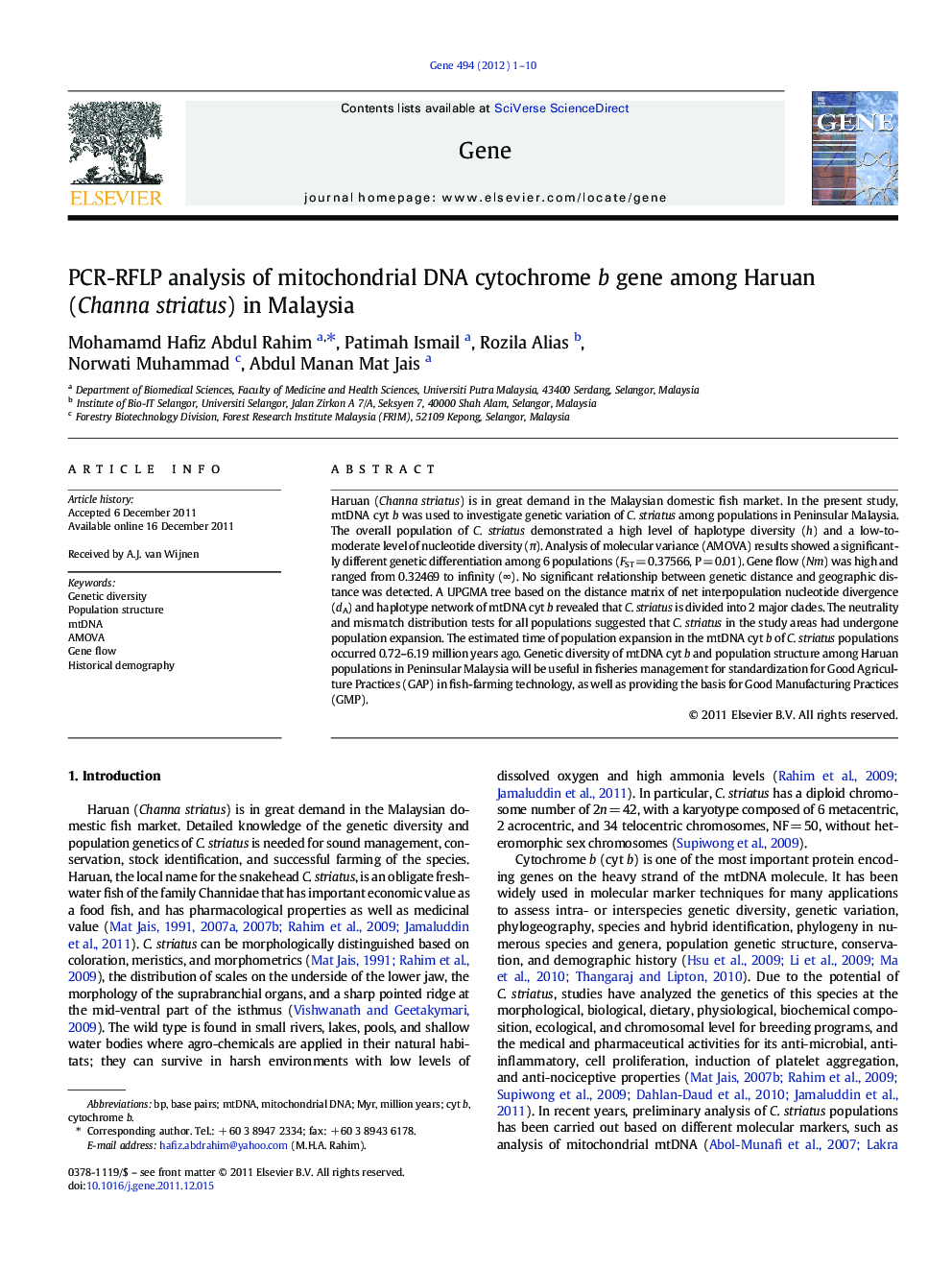| Article ID | Journal | Published Year | Pages | File Type |
|---|---|---|---|---|
| 5907541 | Gene | 2012 | 10 Pages |
Haruan (Channa striatus) is in great demand in the Malaysian domestic fish market. In the present study, mtDNA cyt b was used to investigate genetic variation of C. striatus among populations in Peninsular Malaysia. The overall population of C. striatus demonstrated a high level of haplotype diversity (h) and a low-to-moderate level of nucleotide diversity (Ï). Analysis of molecular variance (AMOVA) results showed a significantly different genetic differentiation among 6 populations (FSTÂ =Â 0.37566, PÂ =Â 0.01). Gene flow (Nm) was high and ranged from 0.32469 to infinity (â). No significant relationship between genetic distance and geographic distance was detected. A UPGMA tree based on the distance matrix of net interpopulation nucleotide divergence (dA) and haplotype network of mtDNA cyt b revealed that C. striatus is divided into 2 major clades. The neutrality and mismatch distribution tests for all populations suggested that C. striatus in the study areas had undergone population expansion. The estimated time of population expansion in the mtDNA cyt b of C. striatus populations occurred 0.72-6.19Â million years ago. Genetic diversity of mtDNA cyt b and population structure among Haruan populations in Peninsular Malaysia will be useful in fisheries management for standardization for Good Agriculture Practices (GAP) in fish-farming technology, as well as providing the basis for Good Manufacturing Practices (GMP).
⺠We investigated the genetic diversity and population structure of Channa striatus. ⺠One hundred and twenty wild species were taken from six stations. ⺠Five restriction endonucleases resulted in enzyme-specific restriction morphs in a total of 29 composites. ⺠Molecular population genetic studies provide necessary information required for increasing the efficiency of management of C. striatus.
